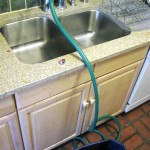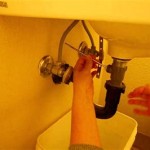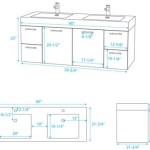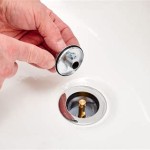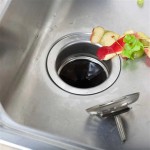Do Spoiled Eggs Sink or Float? Understanding Egg Freshness Through Buoyancy
Determining the freshness of eggs is essential for food safety and culinary applications. While expiration dates provide a general guideline, they are not always definitive. A simple yet reliable method for assessing egg freshness is the water test, which relies on the principle of buoyancy. This article explores the underlying science behind why fresh eggs sink and spoiled eggs float, providing a comprehensive understanding of this technique and its limitations.
The water test is a straightforward procedure. An egg is placed in a bowl or glass filled with water. A fresh egg will sink to the bottom and lie flat on its side. An older egg may sink but stand on one end. A spoiled egg, however, will float to the surface. This difference in buoyancy is due to changes in the egg's internal structure and composition as it ages.
The primary factor influencing an egg's buoyancy is the size of its air cell. An air cell is a pocket of air located between the egg's shell and its internal membranes, usually found at the wider end of the egg. This air cell is virtually nonexistent when an egg is freshly laid. However, the size of the air cell increases over time as moisture and carbon dioxide escape through the porous shell and are replaced by air. This process is a natural consequence of egg aging.
Eggshells are not entirely impermeable; they contain thousands of tiny pores that allow for gas exchange. This porosity is crucial for the developing chick inside a fertilized egg, enabling it to breathe. However, in unfertilized eggs, this porosity leads to the gradual loss of moisture and the influx of air. The rate at which this occurs depends on storage conditions, such as temperature and humidity. Higher temperatures and lower humidity accelerate the process.
The increased air cell size reduces the overall density of the egg. Density is a measure of mass per unit volume. An object will float if its density is less than the density of the surrounding fluid, in this case, water. Conversely, an object will sink if its density is greater than that of water. As an egg ages, the increasing air cell makes it less dense, eventually reaching a point where its density is less than water, causing it to float.
Furthermore, the contents of the egg itself undergo changes as it ages. The egg white, also known as the albumen, becomes thinner and more watery. This is due to the breakdown of proteins within the albumen. The thick albumen is a characteristic of fresh eggs. As an egg ages, these proteins degrade, leading to a reduction in the albumen's viscosity. This change in albumen consistency further contributes to the overall decrease in egg density.
The yolk also undergoes changes, although less pronounced than those in the albumen. The yolk membrane, which surrounds the yolk, weakens over time. This weakening can cause the yolk to flatten out and become more easily broken. The yolk's ability to stand tall and round is an indicator of freshness. However, the changes in the yolk primarily affect its appearance and texture rather than its buoyancy.
While the water test is a reliable indicator of egg freshness, it is not foolproof. Factors other than spoilage can influence an egg's buoyancy. For example, the size and initial porosity of the eggshell can vary between individual eggs, even within the same batch. Eggs with naturally more porous shells will tend to dry out faster and therefore float sooner than eggs with less porous shells.
Another factor to consider is the altitude at which the eggs are stored. At higher altitudes, the air pressure is lower, which can accelerate the loss of moisture from the egg. This can lead to a larger air cell and a lower density, causing the egg to float sooner than it would at sea level. Therefore, the water test should be interpreted with caution in high-altitude environments.
Understanding the Science Behind the Float Test
The float test relies on the principle of Archimedes. Archimedes' principle states that the buoyant force on an object submerged in a fluid is equal to the weight of the fluid that the object displaces. If the buoyant force is greater than the weight of the object, the object will float. If the buoyant force is less than the weight of the object, the object will sink. The density of the fluid also plays a crucial role in this determination.
A fresh egg is denser than water, primarily because it contains a dense combination of yolk, albumen, and shell, with a negligible air cell. When submerged, the weight of the water it displaces is less than the egg's own weight, causing it to sink. As the egg ages and the air cell grows, its overall density decreases. When the air cell becomes large enough, the egg's density becomes less than that of water. At this point, the buoyant force exerted by the water becomes greater than the egg's weight, causing it to float.
The gradual increase in the air cell's size is a measurable phenomenon. In commercially graded eggs, the size of the air cell is used to determine the egg's grade. Grade AA eggs have the smallest air cells, while Grade B eggs have the largest. These grades are based on the United States Department of Agriculture (USDA) standards. While the water test is not as precise as the official grading system, it provides a practical approximation of the egg's freshness based on the same underlying principle.
Furthermore, the changes in the egg white (albumen) contribute to the change in buoyancy. A fresh egg has a thick, viscous albumen that takes up a significant volume. As the egg ages, the protein structure of the albumen breaks down, causing it to become thinner and more watery. This reduces the overall density of the egg and contributes to its tendency to float. The thinning of the albumen also affects the egg's culinary properties, making it less suitable for certain cooking methods, such as poaching.
Interpreting the Results of the Float Test
A completely submerged egg that lies flat on its side is considered fresh. This indicates that the air cell is small and the albumen is thick, resulting in a density greater than water. Such eggs are ideal for most culinary applications, including frying, scrambling, and baking.
An egg that sinks but stands on one end is considered to be older but still potentially usable. This upright position indicates that the air cell has grown slightly, but the egg's overall density is still greater than water. While these eggs can still be used, they may not have the same quality as fresher eggs. For example, the albumen may be thinner, making them less suitable for poaching.
An egg that floats on the surface is considered spoiled. The large air cell indicates that the egg has lost significant moisture and absorbed a substantial amount of air, resulting in a density less than water. Such eggs are generally not safe to consume and should be discarded. The risk of bacterial contamination is significantly higher in spoiled eggs.
It is important to note that the water test is just one method for assessing egg freshness. Other indicators, such as the appearance and smell of the egg, should also be considered. A foul odor is a clear sign of spoilage, regardless of the water test result. Similarly, any discoloration or unusual texture of the egg white or yolk should raise concerns.
Limitations and Considerations of the Water Test
While the water test is a simple and convenient method for assessing egg freshness, it has limitations. The test does not directly detect the presence of bacteria, such as Salmonella, which can cause foodborne illness. Therefore, a floating egg should not be considered safe to eat even if it appears normal otherwise. It serves only to indicate the age and density of the egg, not its microbiological safety.
The accuracy of the water test can also be affected by the type of water used. Tap water, which contains dissolved minerals and gases, can have a slightly different density than distilled water. This difference in density can affect the buoyancy of the egg. However, for practical purposes, tap water is generally suitable for conducting the water test.
Another consideration is the storage conditions of the eggs. Eggs stored at room temperature will age more quickly than eggs stored in the refrigerator. Therefore, an egg stored at room temperature may float sooner than an egg stored in the refrigerator, even if both eggs are of the same initial freshness. Proper refrigeration is essential for maintaining egg quality and extending their shelf life.
Finally, the water test should be used in conjunction with other methods for assessing egg freshness. Checking the expiration date, examining the egg for any signs of damage or contamination, and smelling the egg after cracking it open are all important steps in ensuring food safety. If there is any doubt about the freshness of an egg, it is always best to err on the side of caution and discard it.
In summary, the water test provides a valuable tool for assessing egg freshness by measuring the egg's buoyancy, which is directly related to the size of its air cell and the density of its contents. Fresh eggs sink, older eggs may stand on end, and spoiled eggs float. While the test is not foolproof and has limitations, it provides a readily available and informative assessment that contributes to informed decisions about egg consumption.

Why Bad Eggs Float And Good Sink

Why Do Old Eggs Float Scienceabc

How To Tell If An Egg Is Fresh Science S

How To Check If Eggs Have Gone Bad 4 Infallible Methods

Egg Float Test Is It A Myth The Happy Chicken Coop

How To Tell If Your Eggs Are Off Australian

How To Tell If An Egg Is Fresh Science S

Floating Egg Test Does It Really Work
How To Tell If Eggs Are Bad Howstuffworks

Fresh Egg Test Sink Or Float

